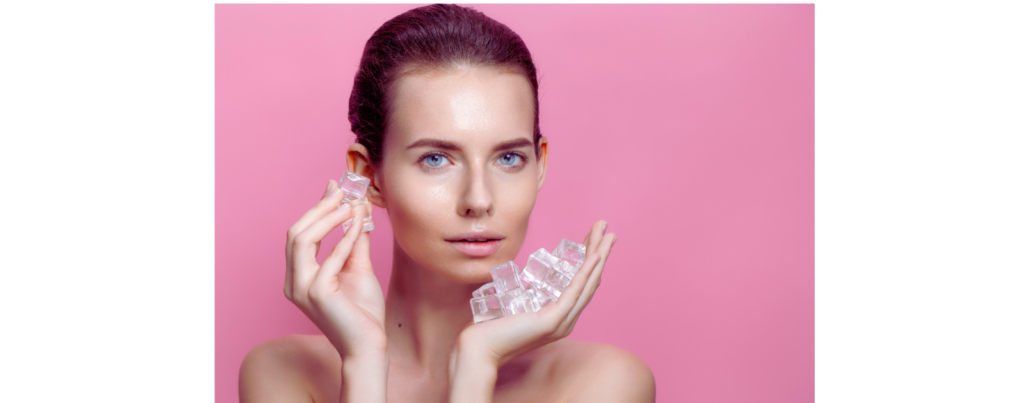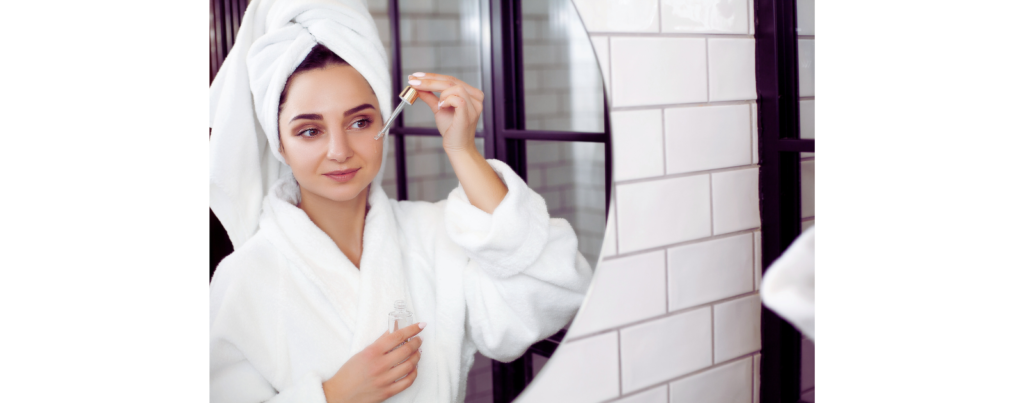When I first heard about facial icing, I was skeptical. Could something as simple as rubbing ice on your face really work wonders? But after trying it myself, I’m here to tell you—this easy, inexpensive trick is a game-changer for radiant skin! Whether you want to reduce puffiness, soothe irritated skin, or get a healthy glow, facial icing might just become your favorite beauty hack. Let’s dive into everything you need to know.
What is Facial Icing?

Definition and Benefits
Facial icing, also known as skin icing or cold therapy, is a popular skincare practice that involves applying ice or extremely cold temperatures to the face to achieve various benefits. This simple yet effective technique can be done at home or in a professional setting, making it an accessible way to care for your skin. The benefits of facial icing are numerous: it helps reduce puffiness and inflammation, calms irritated skin, and can even help manage acne. Additionally, the cold temperatures improve blood flow, which brings a natural, radiant glow to your complexion. Whether you’re looking to soothe irritated skin or simply want to enhance your skincare routine, facial icing offers a range of advantages that can help you achieve glowing, healthy skin.
What Does Icing Your Face Do?
Facial icing, also known as skin icing, is one of the most basic forms of skincare, but its benefits are anything but basic. Here’s what happens when you ice your face:
- Reduces Puffiness and Inflammation: Ice constricts blood vessels, reducing swelling and under-eye bags. This is especially helpful in the mornings or after a late night.
- Improves Blood Flow: The cold temperature boosts circulation by stimulating blood vessels. This increased blood flow brings nutrients and oxygen to the skin, giving you a natural, healthy glow.
- Soothes Irritated Skin: If your skin feels red, inflamed, or sensitive, icing can calm it down by reducing inflammation and creating a cooling effect.
- Minimizes Pores: Facial icing helps shrink pores by tightening the skin, making it look smoother and less prone to dirt and oil buildup.
- Manages Acne: Facial icing calms irritated skin, and can even help manage acne. Acne develops when hair follicles become clogged with oil and dead skin cells. By reducing inflammation and tightening the skin, facial icing can help prevent the buildup of dead skin cells and oil.
The Science Behind Ice Facials

The science behind ice facials lies in the way cold temperatures affect the skin. When you apply ice to your face, it causes the blood vessels to constrict, which helps reduce inflammation and puffiness. This is particularly beneficial for areas prone to swelling, such as under the eyes. The cold temperature also slows down the production of sebum, which can help reduce acne breakouts. Additionally, the cold stimulates blood flow, bringing more oxygen and nutrients to the skin, resulting in a healthy, radiant glow.
Applying ice to the skin also helps minimize the appearance of pores and fine lines, giving your complexion a smoother and more youthful look. The cold can reduce under-eye bags and dark circles, making you look more rested and refreshed. However, it’s important to note that facial icing is not suitable for everyone. Those with sensitive skin or certain medical conditions should consult a healthcare professional before trying this technique.
For optimal results, it’s recommended to ice your face 1-2 times a week. Always follow a proper skincare routine before and after icing, including gently cleansing your skin and applying a moisturizer to protect your skin barrier. Overall, facial icing is a simple and effective way to enhance your skincare routine and achieve various benefits for your skin.
How to Safely Ice Your Face

If you’re ready to try this at home, gently massage your skin in circular motions with ice cubes wrapped in a cloth to avoid over-exposure to cold in any one area. Here are some tips to ensure you get the best results without damaging your skin:
Prepare Your Skin
- Always start with clean skin to avoid spreading bacteria, which can lead to breakouts.
- Wrap the ice cube in a thin cloth, paper towel, or plastic wrap. Direct contact with ice can cause burns or irritation, especially if held in one spot for too long.
Choose Your Icing Tool
- Ice Cubes: These are a simple and effective choice. You can use plain water or enhance them with natural ingredients like green tea or aloe vera.
- Ice Rollers: These are handy and provide consistent cooling without the mess of melting ice.
- DIY Infused Ice: Add ingredients like cucumber, mint, or chamomile for extra skincare benefits.
Apply Gently
- Massage your skin lightly in circular motions to avoid over-exposure to cold in any one area. Pay special attention to areas prone to puffiness, like under your eyes and your cheeks.
- Limit your icing session to 1-2 minutes. Prolonged exposure can irritate your skin’s barrier and cause redness.
Incorporating Facial Icing into Your Skincare Routine

Facial icing is versatile and works for most skin types. An ice facial, which utilizes cold temperatures to soothe and rejuvenate the skin, can be done at home with ice cubes or through professional treatments using vaporized nitrogen or specialized tools. Here’s how to make it a part of your daily routine:
- Morning Glow: Start your day with a quick ice session to reduce puffiness and prepare your skin for makeup. It acts as a natural primer by tightening your skin and minimizing pores.
- Post-Skincare Boost: Use ice after applying your favorite serums or moisturizers. The cold helps lock in hydration and allows products to penetrate deeper.
- After Sun Care: If you’ve spent too much time in the sun, soothe your skin with aloe vera or green tea ice cubes. They reduce redness and calm irritation.
- Before Bed: A quick ice massage can relax your facial muscles and reduce stress, helping you wake up with refreshed skin.
DIY Recipes for Radiant Skin
Ready to take your facial icing to the next level? Try these simple recipes:
- Green Tea Ice Cubes: Brew green tea, let it cool, and pour it into an ice tray. Green tea is rich in antioxidants, which fight inflammation and boost your skin’s radiance.
- Aloe Vera Ice Cubes: Mix aloe vera gel with a little water before freezing. Aloe vera is perfect for soothing irritated or sunburned skin.
- Cucumber and Mint: Blend cucumber and mint leaves with water, then freeze. This recipe hydrates your skin while leaving it feeling refreshed and rejuvenated.
- Chamomile Infusion: Brew chamomile tea and freeze it. It’s ideal for calming sensitive or red skin.
Potential Risks and Precautions

While facial icing has many benefits, it’s not for everyone. Here’s what to keep in mind:
- Sensitive Skin: If you have sensitive skin, test icing on a small area first. The extreme cold can sometimes trigger irritation.
- Cold Urticaria: This is an allergic reaction to cold temperatures that causes hives. If you notice any unusual redness or swelling, stop immediately.
- Ice Burn: Avoid direct contact between ice and skin. Always use a barrier like a cloth or towel.
- Broken Capillaries: Prolonged exposure to cold can lead to broken capillaries, especially around the nose and cheeks.
- Overuse: Stick to icing 1-2 times a day. Excessive use can dry out your skin or disrupt its natural barrier.
FAQ: Your Facial Icing Questions Answered
1. Is ice good for all skin types?
Yes, but those with sensitive or damaged skin should be extra cautious and do a patch test first.
2. How often should I ice my face?
1-2 times a day is ideal. Overdoing it can irritate your skin and lead to dryness.
3. Can facial icing replace skincare products?
No, but it’s a fantastic addition to your routine. Use it alongside quality serums and moisturizers for the best results.
4. Can I use flavored ice cubes?
Avoid anything with sugar or artificial flavors, as they can clog pores and irritate your skin. Stick to natural ingredients like green tea or cucumber.
5. What should I do if I experience redness or irritation?
Stop icing immediately and rinse your face with warm water. If the irritation persists, consider consulting a dermatologist.
6. Can I ice my face in the winter?
Yes, but be extra cautious as cold weather can already make your skin dry. Limit your icing sessions and always moisturize afterward.
Conclusion
Facial icing is one of the simplest and most refreshing ways to pamper your skin. Whether you’re a skincare newbie or a beauty enthusiast, this technique can help you achieve that radiant, glowing look we all love. Plus, with DIY recipes, you can customize your icing routine to suit your skin’s needs. So, grab some ice (or an ice roller) and give it a try. Your skin will thank you!





